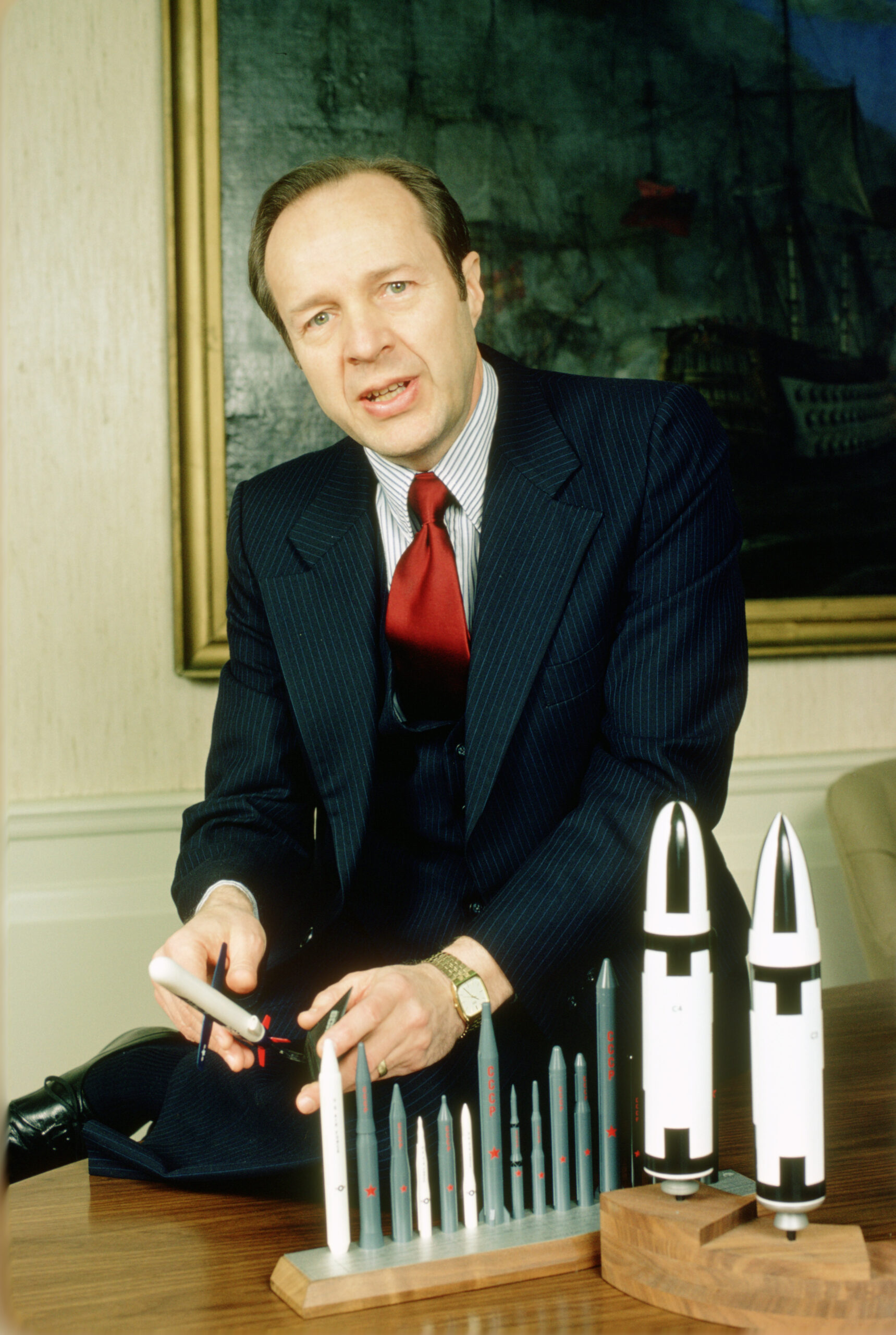The Last Supper at Thirty
The problem with the defense industry is that, in some ways, it is too small.

As a rule, people, even powerful people, are busy keeping the wolf from the door—servants of the everyday absorbed in life’s petty concerns. Hence, most of the unsavory things that happen in the world are not conspiracies, but the results of individual incompetence or systems that are built badly, whether through malice or shortsightedness. The idea of cabals acting collectively (and secretly or quasi-secretly) within a system tends not only to be wrong but to distract from clear thinking about what should actually be done.
So it is all the more jarring when the real thing happens. In July 1993, President Bill Clinton’s secretary of Defense, William Perry, hosted the executives of the nation’s most prominent defense contracting firms for a dinner. He told them that Pentagon budget cuts would make most of their companies unviable. (The defense budget declined precipitously following the end of the Cold War; nobody predicted the military spending bonanza that would attend the Global War on Terror.) His go-getter solution: He encouraged his guests to circulate around the room to figure out what kinds of mergers could be made.
In an excellent 2021 article for The American Conservative, Luke Nicastro laid out the fundamental effects. In the years that followed, fifty-one defense contractors consolidated into five—Northrop Grumman, Lockheed Martin, General Dynamics, Boeing, and Raytheon. Single-bidder contracts, massive cost overruns, performance issues, and premature contract terminations ran and continue to run amok—not to mention the massive influx of lobbying dollars from companies whose job is to make things for wars.
The exigencies of the Ukraine war have underlined the weaknesses of this system. Lean supply chains administered by a handful of companies have struggled to keep the Ukrainians supplied with materiel, let alone to maintain American defense stockpiles. Raytheon’s CEO, Greg Hayes, commented in December 2022 that the war had eaten up thirteen years’ worth of Stinger missiles and five years’ worth of Javelins. Around that same time, it was reported that a third of the American Javelin stockpile had been depleted.
Even the mainstream press has taken notice of the alarming chokehold a handful of companies has over the arms industry. In May, CBS’s 60 Minutes examined the distortions created by concentration of manufacturing in the big five and the hollowing-out of the Pentagon’s corps of contracting experts. The feature noted the seven-fold increase (inflation adjusted!) in cost for shoulder-launched Stinger missiles since 1991. Now that Raytheon is the sole supplier, that firm can command the princely price of $400,000 per replacement.
Yet consolidation is still the paradigm among the contracting giants. Lockheed Martin attempted to acquire rocket manufacturer Aerojet Rocketdyne in 2020, and was blocked last year by the Federal Trade Commission for antitrust reasons. The sixth largest contractor, L3Harris, is now making an attempt at acquisition, replete with lavish lobbying efforts.
Companies cannot be held culpable for profiteering; since the 1919 decision Dodge v. Ford Motor Co., it has been a principle of American commercial law that not profiteering is actually illegal. The hurly-burly of the market is what is supposed to keep costs in line. As a former Air Force general and acquisitions specialist noted in his 60 Minutes interview, “They are companies that have to survive, make profit. The Department of Defense, on the other hand, wants the best weapon systems it can have as quickly as possible and as inexpensively as possible. Those are opposite ends of the spectrum.”
Subscribe Today
Get daily emails in your inbox
There are benefits to size, particularly in heavy industry, where the capital costs and the economies of scale are high. (There is a reason auto manufacturing worldwide is dominated by about ten companies; there is a reason that Vladimir Putin spent the 2000s organizing the Russian defense industry into gigantic conglomerates.) Yet when size becomes prohibitive to performance of the proper state functions, as measured in cost and in supply maintenance, it is time for political solutions—especially when the dysfunction originates in state actions.
Nicastro notes that nationalization is also a viable option used in some European countries; given the mixed results of American adventures in state-backed companies, antitrust monopoly-busting action may be more attractive on the face of it. Another possibility would take a page out of Wilson’s World War– and Korea-era industrial policy: Give other heavy manufacturers outside the defense industry incentives to spin up weapons businesses. (Oddities like the Korea-era M1 manufactured by International Harvester remain collector’s items.)
The thing about conspiracies is that, by definition, they operate outside normal structures; there are no checks on them. In 1993, Perry and his willing cabal of arms dealers essentially tried to reap the benefits of a command economy without creating the systems of political accountability that attend command economies. This was, perhaps, a fitting preamble for the subsequent era in which America attempted to reap the benefits of empire without taking on empire’s responsibilities. In 2023, as we reconsider the latter, we must also reconsider the former. As interest in a robust American industrial policy becomes mainstream, the time has never been more opportune.